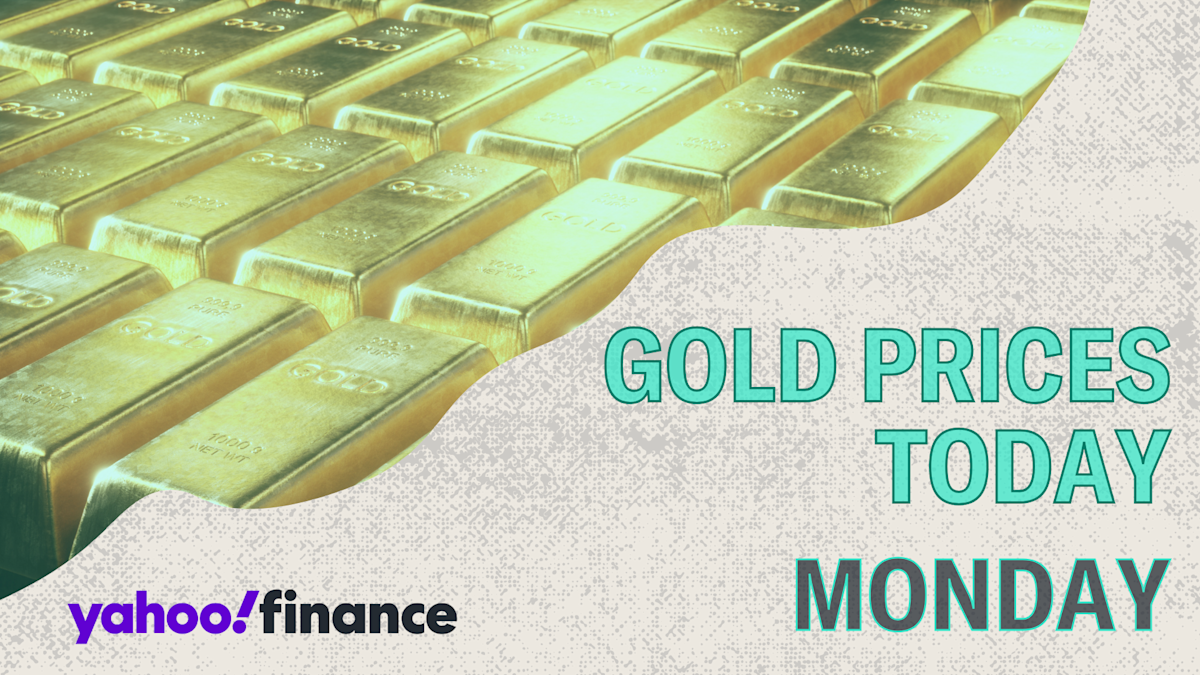Gold (GC=F) futures opened at $3,416.60 per ounce Monday, up 2.1% from Friday’s close of $3,347.70. Gold has not opened above $3,400 since July 23, 2025.
Gold’s stronger opening price follows the release of revised employment data on Friday. New jobs in May and June were revised down by 258,000 to a combined 33,000 for both months. Job growth in July was 73,000. The average monthly employment growth of about 35,333 since May is the worst record since the pandemic. The revised data aligns with reports that businesses have tabled growth initiatives due to the uncertainty created by President Trump’s changing economic policies. Demand for gold tends to rise when the economic outlook is uncertain.
Stock market today: Dow, S&P 500, Nasdaq futures climb with tariffs and jobs data in focus
The opening price of gold futures on Monday is up 2.1% from Friday’s close of $3,347.70 per ounce. Monday’s opening price marks a gain of 2.7% over the opening price of $3,326.60 one week ago on July 28. In the past month, the gold futures price has gained 1.6% compared to the opening price of $3,362 on July 3, 2025. In the past year, gold is up 39.8% from the opening price of $2,444 on August 2, 2024.
24/7 gold price tracking: Don’t forget you can monitor the current price of gold on Yahoo Finance 24 hours a day, seven days a week.
Want to learn more about the current top-performing companies in the gold industry? Explore a list of the top-performing companies in the gold industry using the Yahoo Finance Screener. You can create your own screeners with over 150 different screening criteria.
Investing in gold is a four-step process:
-
Set your goal
-
Set an allocation
-
Choose a form
-
Consider your investment timeline
The first step to investing in gold is understanding your goals for buying it.
Given gold’s historic behavior, three suitable investing goals for a gold position are:
-
Diversification into an asset that moves independently from stock prices
-
Protection against inflation-related loss of purchase power
-
Backup source of value and wealth in an unlikely economic collapse
Gold has long been part of a balanced portfolio given its ability to hold its value – or even increase further – when the value of other assets is falling. That is why investors utilize gold as a stabilizer. Investors rely on gold’s strength in tough times to limit unrealized losses in equities and inflation-related reductions in purchasing power of cash deposits. That’s exactly what we’re seeing play out now before our eyes.
Gold is also a widely recognized store of value. As such, the precious metal can potentially stand in as a medium of exchange if the dollar collapses.
“I recommend that everyone buy a little gold as a hedge against calamity,” said Scott Travers, author of The Coin Collector’s Survival Manual and editor of “COINage” magazine, in an interview with Bottom Line, Inc. Gold “should be viewed as an insurance policy,” he said.
Learn more: How to invest in gold in four steps
Whether you’re tracking the price of gold since last month or last year, the price-of-gold chart below shows the precious metal’s steady upward climb in value.
Historically, gold has shown extended up cycles and down cycles. The precious metal was in a growth phase from 2009 to 2011. It then trended down, failing to set a new high for nine years.
In those lackluster years for gold, your position will negatively impact your overall investment returns. If that feels problematic, a lower allocation percentage is more appropriate. On the other hand, you may be willing to accept gold’s underperforming years so you can benefit more in the good years. In this case, you can target a higher percentage.
The precious metal has been in the news lately, and many analysts are bullish on gold. In May, Goldman Sachs Research predicted gold would reach $3,700 a troy ounce by year-end 2025. That would equate to a 40% increase for the year, based on gold’s January 2 opening price of $2,633. Rising demand from central banks, along with uncertainty related to changing U.S. tariff policy, are the factors driving the increase.
If you are interested in learning more about gold’s historical value, Yahoo Finance has been tracking the historical price of gold since 2000.







